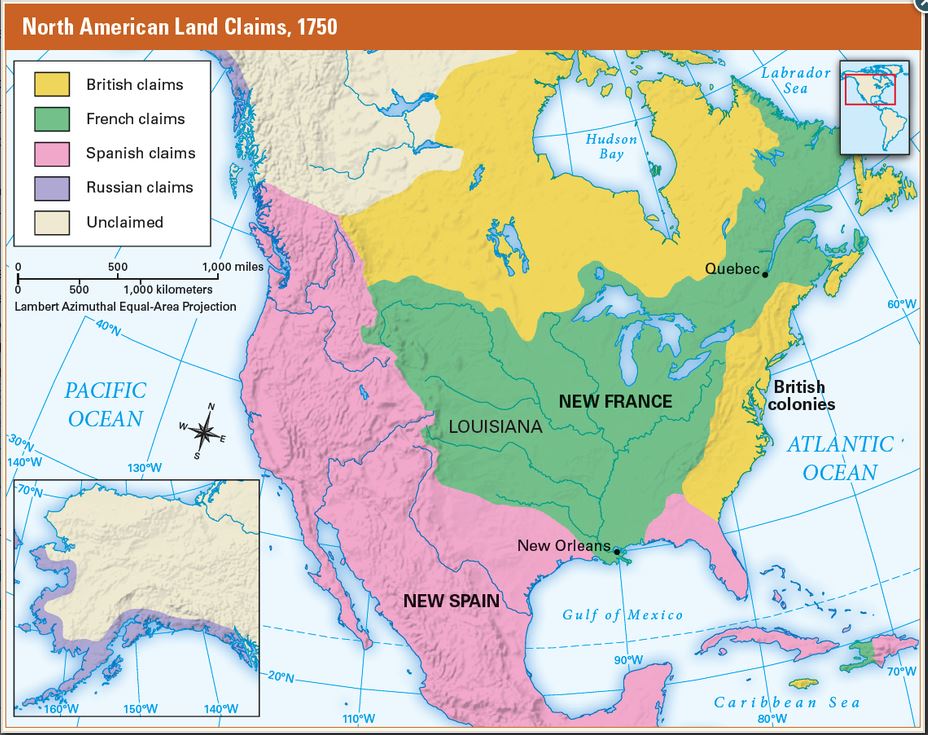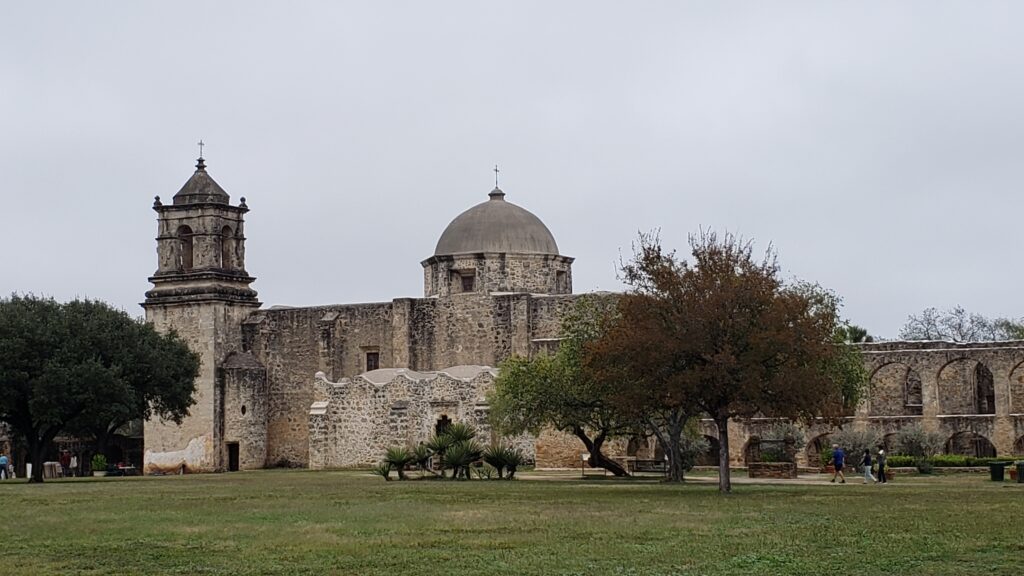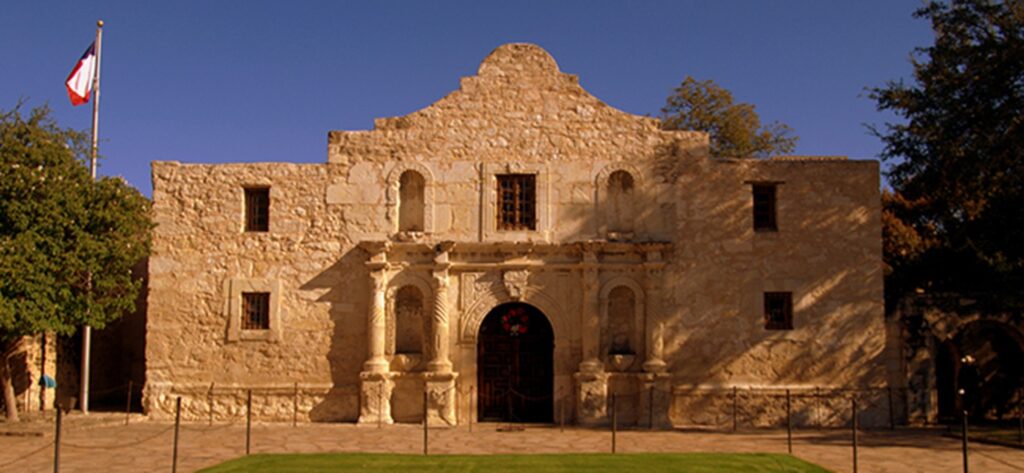In 1718 the political map of North America looked very different than one might think. France claimed about 30% comprised of the St. Lawrence and Mississippi Rivers drainage area. Spain claimed another 30% stretching from the Gulf coast of what is now Texas to Vancouver Island in Canada. Britain laid claim to about 30% but, with the exception of a few colonies strung along the east coast, most of its claim was the area surrounding Hudson Bay in Canada.

Much of the land was unexplored and boundaries were just guesses but each empire knew where its interests lay. Spain knew France was expanding westward from its settlements along the Mississippi River. Spain was well established at Santa Fe in Nuevo Mexico and at San Diego and San Francisco in Alta California but it had no established towns in the eastern portion of its claim. It needed to secure its claim to the colonial province in the east called Tejas. It needed Spanish speaking settlements in Tejas that were loyal to Spain. It had an ally in the Catholic Church which sought to spread its influence as well. Together they would fund an expedition to the province.
In 1718 a group of Franciscan friars and monks, explorers and soldiers left Mexico City to bring Christianity and Spanish culture to the indigenous peoples of Tejas. In this way they serve both the will of God and that of the King. After nearly a year’s journey they arrived at a river surrounded by fertile soil and inhabited by bands of nomadic hunter gather Indians. It is here they establish Mission San Antonio de Valero. Other Franciscans followed and over the next 20 years four more missions were established along the San Antonio River. The Indians are interested. They are nomadic hunter gatherers dependent on the weather and the migration of animals for survival. The friars offer them a new way to survive and a new god. Not all, but enough Indians join the missions.

The friars teach them farming along with Christianity. They show them how to store grain, develop irrigation, fashion metal into tools and herd animals. In exchange the Indians build the church and the other buildings of the mission. Each mission is first and foremost a religious center but it is also a center of commercial activity and a defensive fortification.
Surrounding the church is a plaza in which are workshops, communal ovens and open-air looms. Around the plaza are the houses for the Indigenous and Spanish members of the mission. Built with adjoining walls, row house style, their back wall forms the outer defensive wall against marauding Apache bands. Outside the wall are irrigated farm fields that support the mission community. Missions San Juan, Concepción, San José and Espada took shape along the river over the following decades all following the same plan. Here is the interior of Mission San José as it appeared at its completion in 1782.
It worked. The Indians adopted Spanish ways and the Spanish learned from the Indians how to live away from the mission in the vast landscape of Tejas.
In the process of herding animals on the open range both Spanish and Indian learned to become the first vaqueros (cowboys). They interbred and by 1800 many people traced their heritage to both Spanish and Indian.
The province of Tejas was clearly Spanish now secured by permanent Spanish speaking settlements. But times were changing. Spain had acquired Louisiana from France. The French threat was reduced. The Indians had been converted. The town of San Antonio now surrounded its namesake mission. The missions were no longer needed.
A few trappers and traders were arriving from the newly independent America. They were curious about the Spanish province west of the Mississippi. They misunderstood the Spanish name and labelled it on their maps as Texas.
Mission San Antonio de Valero was the first to be closed. It was secularized 1793 and by 1800 completely abandoned. The other missions would follow in the subsequent decades. The fields continued to be farmed and mass was held in some of the churches and but they were no longer missions, just parish churches.
There were changes further afield as well. In 1802 in Mexico City there was talk of revolution. Independence from Spain like the America. To protect against revolt in the north, Spain sent a company of soldiers to Tejas from the city of Alamo del Parras in Coahuila. They occupied the abandoned Mission San Antonio. The locals called them the Alamo Company. The revolution did not materialize and the Alamo Company left a couple years later taking everything with them but the name. Thereafter the abandoned Mission San Antonio de Valero would be called the Alamo.

Thirty two years later, following the defeat of Texian and Tejano independence fighters there by the Mexican Army, the abandoned mission’s name would be known throughout America.
The Alamo is preserved by the State of Texas. Missions San Juan, Concepción, San José and Espada are preserved by the National Park Service. Mission San José and Mission Concepción continue to be active Catholic parishes.
Texian, an Anglo-American resident of Texas prior to it joining the United States.
Tejano, a Spanish speaking resident of Texas prior to it joining the United States.
Texan, any resident of Texas after it joined the United States. Tejano is still used to refer to Spanish culture in Texas especially music.
Beautiful as usual Al I can’t believe it took 62 years to build but well worth it. Glad to see your having a good trip. How did you make out after your bike mishap are you ok? Tell Lorraine hi for me stay safe.
My stay at Lackland AFB left me with no fondness or respect for the Alamo in 1968, when all of San Antonio was dust and squalor. Tourism has restored perspective as well as honor to the temporary and partial return of Texas to the union. But it’s future may be as problematic as it’s past. Thanks for the reminder.